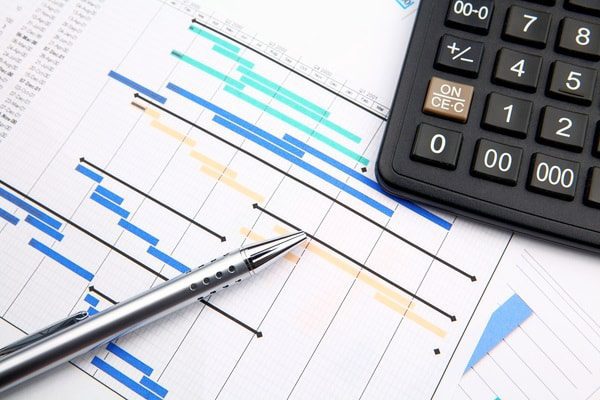What is EAM (Enterprise Asset Management)?


Many of today’s companies are well-positioned to do business internationally and must constantly find new ways to improve the effectiveness of their operations. Regardless of the industry, assets of all types must be managed in a way that maximizes the return on investment. The adoption of new digital platforms has helped businesses realize this expectation to extract greater value from their equipment and other assets.
The global market for enterprise asset management (EAM) solutions is expected to grow at a rate of 17% per year over the next decade. Part of the push for new software is a transition to cloud-based platforms and streamlined systems that are easily integrated with other programs.
These new EAM systems make it easier to view important data, organize workflows, and manage maintenance activities for a wide variety of different asset types. The overall benefit of these EAM tools is an improved return on investment (ROI) for the organization.
Throughout this guide, we will take an in-depth look at the EAM software landscape, how these platforms work, and how to implement a solution that will provide the greatest benefit for your company.
Enterprise Asset Management is a strategic approach that integrates software, systems, processes, and people to optimally manage an organization’s physical assets and infrastructure across all locations and facilities. EAM encompasses activities such as asset tracking, maintenance management, inventory control, work order management, and analytics to maximize asset utilization, extend asset lifecycles, reduce operational costs, and ensure regulatory compliance.
The key aspects of what EAM are many and they include:
When it comes to trends in EAM, there is ever-increasing adoption of cloud-based EAM solutions. The enterprise asset management software market is predicted to reach $21.47 billion by 2030 at a CAGR of 14.2%. What’s more, 96% of asset managers already use cloud computing technologies in their front-to-back offices, and 67% plan to increase that reliance on core financial services by 2024 (source)
To recap, EAM is a holistic approach leveraging technology to strategically manage an organization’s critical physical assets across their entire lifecycle to drive operational excellence and maximize returns.
The major reason to use an EAM platform is the ability to manage the entire lifecycle of each of your assets. Being able to track so many details in a single location helps keep your team aligned and avoids confusion. In order to understand how an EAM functions, we need to take a look at the major components that are core features of most systems.
To determine the total cost for each asset that you own, it is necessary to track various costs associated with maintaining and operating each asset. Most EAMs allow you to enter purchasing, maintenance, repair, service, and other spending figures. In many cases, you can also integrate your EAM with other financial software tools and manage budgets for each individual asset, as well as for your service and facility teams overall.
An EAM can help guide your team through each of the major phases involved with an asset’s lifecycle. There is so much more to be mindful of than simply purchasing and decommissioning your equipment. Some of the key asset lifecycle steps that can be tracked in an EAM include:
The ability to monitor costs and work orders associated with each phase of the process can help you and your team make more informed decisions along the way. Because requirements can vary for each business and industry, many of the entry fields and other details within the system can be customized.

The large amount of data stored within an EAM software platform can be used to analyze nearly any aspect of your business. You can add your own key performance indicators (KPIs) and track metrics that are most relevant to your specific operation. It is also possible to generate reports to review with management and identify areas of improvement.
Especially for large pieces of industrial equipment and other specialized tools, there may be a number of different contracts that must be managed. These can include software, service, and supply chain agreements. An EAM keeps them together so you can access your essential information at any time and share updates with clients, employees, and vendors.
One of the modules that strongly overlaps with CMMS platforms, maintenance management helps you track work orders, costs, and inventory associated with equipment and asset upkeep. Some software tools allow you to analyze and estimate schedules related to preventive, predictive, and corrective maintenance work.
Your maintenance team can also use the system to track spare parts inventory while also organizing tools and supplies.
Work orders are used to organize activities among personnel and contractors that interface with your assets. This is one process that really benefits from the automation provided by many EAM systems. For example, when a problem is identified, a work order can be automatically assigned to the right resource without delay or needing to use a different system.
Keeping track of your assets is one thing, but keeping track of employees can be just as challenging. Managing work hours and priorities is much easier with an EAM platform due to the integrated schedules and ability to make real-time assignments.

A successful software implementation should reduce work steps and make your operation more efficient. Since an EAM can provide easy access to information with a scan or a few clicks, there is little downtime or delay.
When integrated with scanning hardware and a series of barcode labels and tags, asset management can be automated for a truly streamlined approach. These are some of the important ways that an EAM deployment can help your operation:
Here’s a handy table for easier use:
| Benefit | Description |
|---|---|
| Centralize asset information | A CMMS as part of EAM tells maintenance managers details about assets like location, maintenance needs, who should work on it, and when. |
| Resolve issues before they happen | Asset management software supports preventive capabilities to maintain equipment and preempt issues that disrupt production. |
| Monitor assets smarter | AI-powered remote monitoring delivers insights into current and expected asset states, allowing for fewer and more accurate alerts. |
| Maximize asset utilization | Data from IoT devices and analytical tools help extend asset availability, reliability, and usable life. |
| Manage aging assets | Equipment lifecycles are extended through informed maintenance strategies and risk management for better ROI. |
| Elevate maintenance management | IoT, AI, and analytics enhance equipment maintenance practices and asset tracking for compliance. |
| Consolidate operational applications | EAM helps establish a single system to manage virtually all asset types across an enterprise. |

Most businesses could benefit from an EAM software platform, but certain roles within an organization will find these resources particularly helpful. Anyone involved with resource budgeting, allocation, and management will often use an EAM for planning purposes.
Along with this example, here are some additional roles that are often associated with asset management:
To give you a better sense of what an EAM does and why you need it, check out the table below:
| Capability | Description |
|---|---|
| Work management | Manage planned and unplanned work centrally, from initial request through completion. |
| Maintenance phases | Move from corrective to preventive to predictive maintenance based on data. |
| Planning and scheduling | View work orders and preventive maintenance schedules graphically on a Gantt chart. |
| Supply chain management | Integrate assets and maintenance materials into the supply chain using IoT technologies. |
| Health and safety | Document and report EHS concerns, incident analysis, corrective actions, and process changes. |
| Mobility | Accomplish tasks like meter reading, signatures, barcodes, voice-to-text using mobile devices. |
| Analytics | Leverage data analytics to optimize asset performance, maintenance strategies, and operations. |

With hundreds of asset management software solutions on the market, it can be difficult to understand the differences between the various types of solutions. The two major software types in this space are EAMs and computerized maintenance management systems (CMMS). Both of these systems have a similar purpose in helping companies manage their assets. The major difference between them is related to their scope.
A CMMS platform is generally focused only on maintenance management as the core functionality. EAM systems, on the other hand, take a more comprehensive approach and us

Choosing an EAM platform is certainly a team effort. Since these software systems connect so many different departments, it is crucial to start with a comprehensive planning process. No two EAM software programs will be exactly alike, and there may be major differences even within the same family of products.
These are a few of the most critical steps that can help you select an EAM program that will meet all of your most critical needs:
There are also many essential features you’ll want to ensure are present in any EAM solution you choose, including:
These are many of the important considerations that a team needs to make prior to implementing a new EAM platform. Making a formal move to true enterprise asset management is a major commitment and one that will often lead to substantial cost savings and operational efficiencies.
With careful planning, you can create a truly dependable asset management program. It is an exciting time with so many EAM options available in the market, and you’re likely to find one that suits your requirements. By familiarizing yourself with the important components of an EAM and the differences between similar software packages, you can make an informed decision and help manage the costs of your system deployment.
An Enterprise Asset Management (EAM) system is essential for organizations to effectively manage and maintain their physical assets throughout their entire lifecycle. EAM software helps optimize asset performance, reduce downtime, extend asset lifespan, ensure regulatory compliance, and minimize operational costs.
An EAM allows proactive asset management for maximizing productivity and return on investment by way of the following:
Enterprise Resource Planning (ERP) systems are designed to integrate and manage core business processes like finance, procurement, supply chain, and human resources across an organization. On the other hand, Enterprise Asset Management (EAM) systems specifically focus on managing the lifecycle of physical assets, including maintenance, repairs, inventory, and work orders.
While ERP provides a high-level view of organizational resources, EAM offers granular asset-level visibility and control for optimizing asset performance and utilization.
Enterprise Asset Management (EAM) and IT Asset Management (ITAM) are distinct but complementary disciplines. EAM focuses on managing the lifecycle of an organization’s physical assets, such as equipment, machinery, vehicles, and infrastructure. In contrast, ITAM is concerned with managing the lifecycle of IT assets, including hardware, software, and related services.
While EAM deals with tangible assets critical to operations, ITAM ensures efficient management of technology assets that support business processes.
SAP Plant Maintenance (PM) is a module within SAP’s Enterprise Resource Planning (ERP) system, specifically designed for managing maintenance operations and processes. It provides functionalities like work order management, preventive maintenance planning, and inventory control for plant equipment and facilities.
On the other hand, SAP Enterprise Asset Management (EAM) is a more comprehensive solution that encompasses the entire asset lifecycle, from acquisition to disposal, across an organization’s diverse asset portfolio. While SAP PM focuses on maintenance activities within a plant or facility, SAP EAM offers a broader scope for managing all physical assets across multiple sites and locations.
Our sales engineers are experts in automatic asset tracking, tagging and identification,a nd can answer all your questions. Get in touch now.
Lets Talk ›